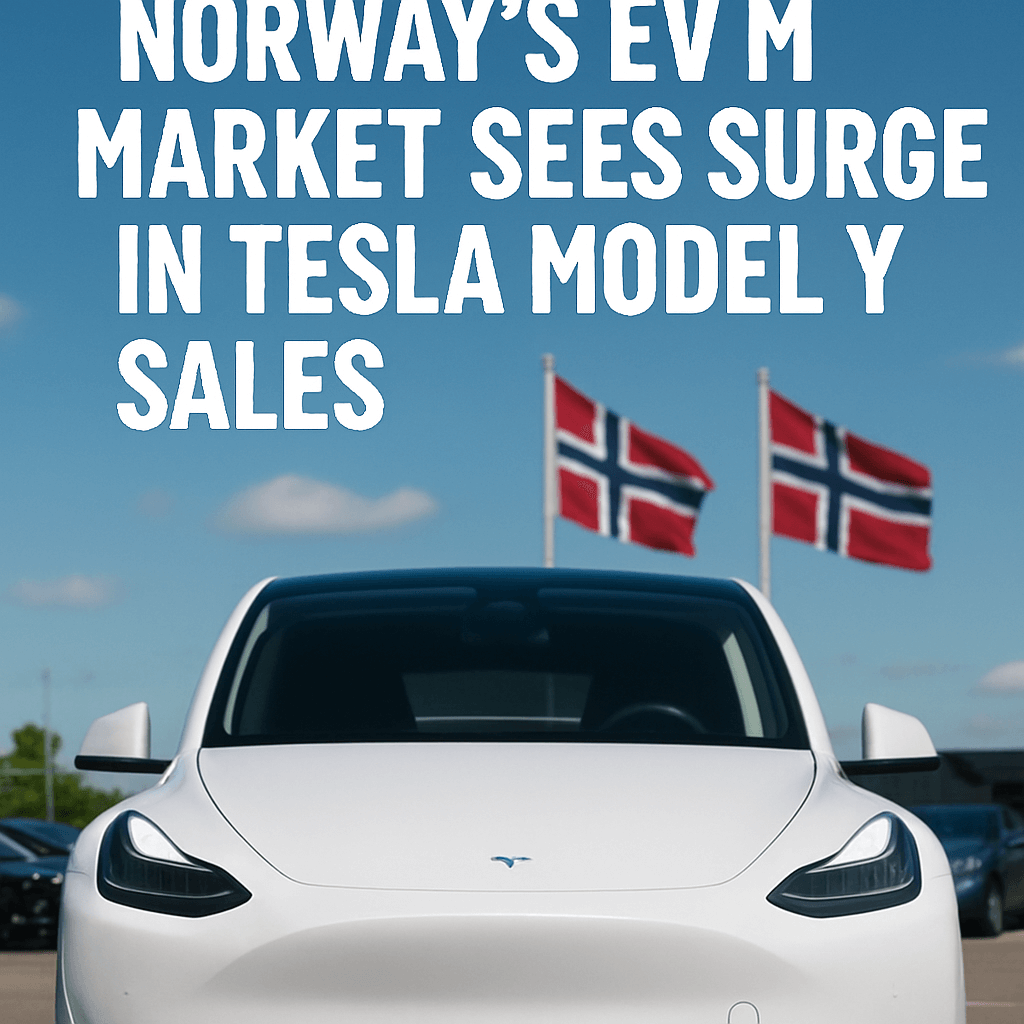Norway’s EV Market Sees Surge in Tesla Model Y Sales

In an impressive display of demand, registrations of new Tesla electric vehicles (EVs) in Norway surged more than threefold in May, driven primarily by the popularity of the refreshed Model Y. This remarkable performance highlights Norway’s status as a paradise for EV enthusiasts, where over 90% of new vehicle sales are fully electric—a figure unmatched globally.
A Unique EV Landscape in Norway
Norway’s EV market presents a stark contrast to global trends. Despite the country’s significant oil resources, fewer than 200 of the 43,000 vehicles sold by April this year were powered solely by gasoline. The Norwegian government has implemented robust policies fostering EV adoption, including extensive tax breaks, free tolls, and access to bus lanes, all contributing to the burgeoning EV landscape.
Tesla’s Performance in Norway
Recent data released on Monday illustrates that Tesla’s sales in Norway reached approximately 2,600 registrations in May alone, marking a substantial recovery from earlier year-to-date losses. This uptick placed Tesla back at the forefront of all car brands in the country, especially as sales of the Model Y doubled from its April performance, now indicative of sufficient supply and demand equilibrium.
Experts believe this performance could signal the end of concerns regarding production constraints impacting Tesla’s sales in other European markets. The delayed rollout of the updated Model Y had previously created uncertainty, but the revived demand suggests that issues may be regional rather than systemic.
Challenges Outside Norway
While Tesla thrives in Norway, its situation in other European markets paints a more complex picture. In the Netherlands, registrations fell by 36% year-on-year, while Sweden experienced a decline in Tesla sales surpassing 50%, and France saw a staggering two-thirds reduction in volumes. These markets traditionally boasted strong EV adoption and have shown preference for Tesla models, yet collectively managed just 2,281 Tesla registrations in May—fewer than Norway’s Model Y sales.
- Netherlands: -36% YoY in May
- Sweden: >50% decline
- France: -66% drop
The considerable downturn in these markets can be attributed to shifting consumer preferences, availability of alternatives, and intensified competition. The saturation of the EV market and increased visibility of brands like BYD are reshaping buyer choices across the continent.
Observing the Rise of BYD
In contrast, the Chinese automaker BYD has shown explosive growth, particularly in Spain, where its sales skyrocketed by ten times, primarily due to the popularity of the Seal U crossover. BYD’s success is reflective of a broader trend, as the manufacturer is preparing to commence production at its new plant in Hungary, thus increasing their capacity to meet European demand.
In May, BYD reported a 42% increase in sales of fully electric vehicles, raising questions about Tesla’s hold on the EV market. BYD’s competitive edge lies in its diverse product lineup and pricing strategy, which often provides consumers with more affordable alternatives compared to Tesla’s premium product offerings.
Looking Ahead: Market Dynamics and Future Prospects
The competition among EV manufacturers is intensifying as Europe increasingly embraces electrification. Several factors will influence Tesla’s ability to sustain its dominance. Analysts suggest that Tesla’s innovative culture and brand loyalty remain significant advantages. However, to regain traction in declining markets, Tesla may need to evaluate pricing strategies and consider localized manufacturing to mitigate import tariffs and supply chain costs.
In conclusion, while Norway’s strong support for Tesla underscores the brand’s loyalty among consumers, the broader European market reveals a challenging landscape where competition is thickening, particularly from Asian manufacturers. The onus lies with Tesla to adapt to evolving market dynamics while continuing to innovate and meet consumer needs effectively.
Author: Christiaan Hetzner
Senior Reporter at Fortune covering the automotive industry and Europe’s business landscape.
Source: fortune